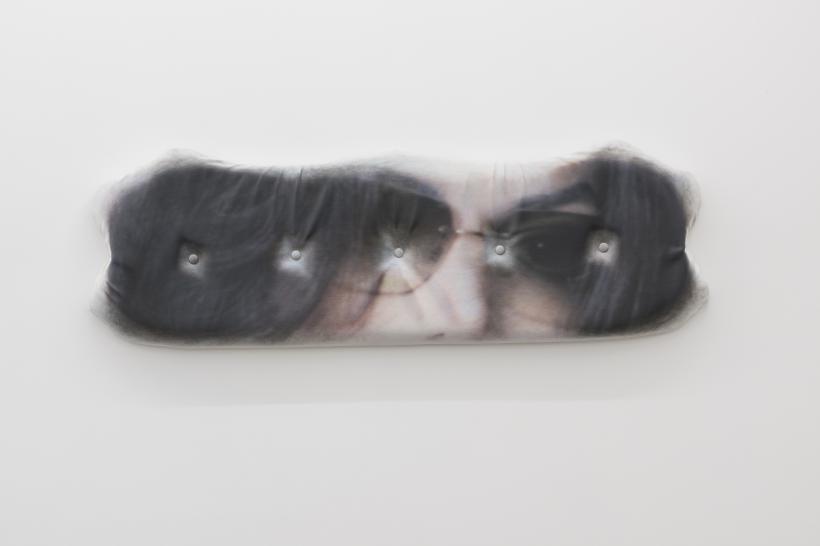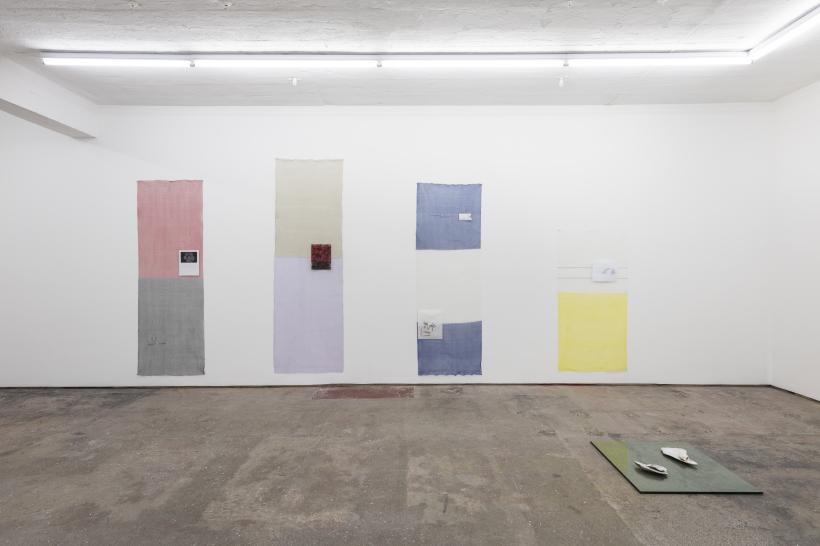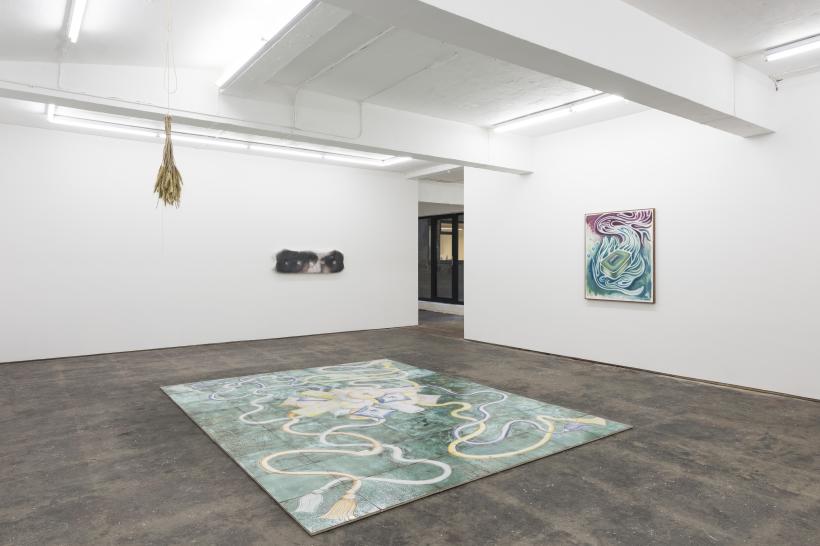This autumn Seventeen presents ‘Lonesome Wife’, an imaginative and seductive exhibition displaying the work of nine multiform artists. Taking the focal point of being a show about text but without the text, curator Attilia Fattori Franchini edifies the character of William H. Gass’ (1968) novel ‘Willie Masters’ Lonesome Wife’, by using installation, painting and photography. The unseen text is brought to gallery visitors through abstract, visual props that are as gentle and subtle as they are fetishistic and nasty.
‘I feel sometimes as if I were imagination, rather imagination imagining itself imagine.’ These are the words of the Lonesome Wife – to be read in a seductive tone no less. Artist Noah Barker recreates the narrative of Gass’ disappointed female lead, Babs Masters in place of the traditional press release. The text voices these imaginations as the artists and their work, and the individual who composes them as the curator, Franchini herself. We are asked to read and feel the energy of Babs’ character in the exhibition; to register the movement from form to process to content in the gallery’s basement space.
Despite there being a generous amount of work in the gallery, the exhibition is not overcrowded. Each artist has contributed several works to the space, using different persuasive strategies to try and serve the same message of Babs’ character and her varied seductive techniques. Vanessa Safavi’s ‘So Many Banana Skins in the Pathway (Holding Substitute I & II)’ teases voyeurs with silicone encased in buckled straps, a suggestively sexual yet domestic installation. This sits parallel to Isaac Lythgoe’s ‘Over ownership, over outsourced opinions, over enigmas’, a UV print installation set upon a faux leather couch-back. Once again, erotic suggestiveness collides with the mundane, private-space of an imagined home.
Throughout ‘Lonesome Wife’ there are plenty of subtle push and pulls between each artist. Victoria Adam’s tenuous sculptures replicate the uncanny by taking the natural and replacing it with something fabricated. Her ‘Lost and sad (Diana)’ installation sees wheat stalks replaced by nude coloured elastic hair bands, and her ‘Mermaidoil plumage crease’ replaces water with resin to create another labored illusion. This lack of water echoes Adriano Amaral’s work ‘Untitled’, a pair of aluminum wall appliances filled with water. But now we question the materiality of the water: is the substance really there or is it another blurred deception?
As Barker’s reimagined press release sits in visitor’s palms for the remainder of the exhibition, his installation ‘Courtyard’ also follows visitors beneath their feet, in the form of crushed oyster shells. Spread throughout the gallery space, Barker’s work crunches and scrapes with every movement and starkly contrasts Adam’s ‘Sunset bathrooms (saturdays) & (thrifty)’, a pair of ceramic shells filled with massage oil and body piercings. Over again, the natural is reformed by the unnatural; Barker’s real oyster shells juxtapose Adam’s fake and sensual models of shells. Fetishisation also makes a reemergence through the intimate placing of tongue piercings in aromatherapy oils. This floor-based work sits opposite Lythgoe’s absurdly sinister Perspex sculpture, a body sized frame one might step into with feet straps; yet again, another reminder of the fetishised and perhaps sadomasochistic element of ‘Lonesome Wife’.
Patrizio Di Massimo’s elegant floor work was originally made to be a functioning floor, however it remains untouchable to visitors throughout this exhibition. The muted green and nude tones of his painting match with Justin Fitzpatrick’s sinister yet surreal wall paintings, and of course Safavi’s naturally unnatural artworks that are, too, drenched in soft beiges. Lisa Holzer diverges from these familiar earthy tones, finding opulence in custard yellows and clinical whites. Her paired photographs of what appear to be abstract bones or cartilage are unsettling, coupled strongly by Fitzpatrick’s dark and hypnagogic murals. The text in her photographs also resonates with Barker’s offbeat press release and the constant surrounding narrative of the Lonesome Wife character.
Finally Luis Miguel Bendaña’s custom-made machine knits bring block colouring and printed imagery to the exhibition. These knitted compositions represent a type of disorganised archive, mimicking outlines of animals found elsewhere in the gallery, once again in Fitzpatrick’s sincere wall works.
Just as Gass used Babs to seduce the reader, Franchini uses Babs to seduce the voyeur through her character’s ornamental embodiment in the selected artists’ work. Seventeen’s latest exhibition is a rousing and intimate indulgence for every voyeur and is an exhibition not to be missed in the wake of Frieze. Though there are plenty of gallery offerings this season, let ‘Lonesome Wife’ be the one that distracts you.










